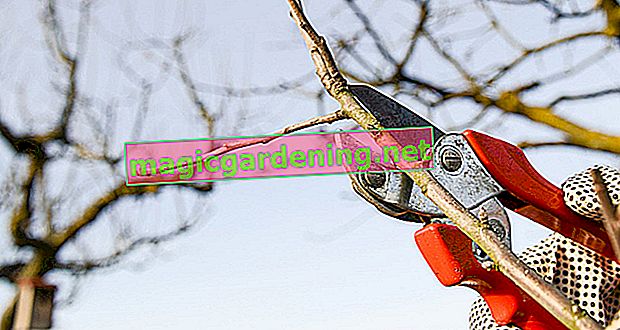
Hawthorn is one of the fast-growing trees and shrubs that you cut to a height of around 15 centimeters while planting. While you are only allowed to cut shapes in the summer months, you can use the winter months for more intensive pruning of the hawthorn hedge.
also read
- What to look out for when building a fireplace in the garden
- Climbing roses - what to look for when choosing a climbing aid
- What to look for when collecting mushrooms
The topiary of a hawthorn hedge
The topiary is the so-called summer cut, with which you give the hawthorn hedge the desired shape in the early summer months. Out of consideration for the local fauna, a radical cut is not allowed between March 1st and September 30th. Birds in particular prefer the hawthorn hedge as a nesting place, as the thorny branches protect the offspring from predators.
The shape cut is carried out in a trapezoidal shape. This means that the hedge becomes narrower towards the top. In this way, your hedge remains permanently tight and, above all, healthy. If you cut the hawthorn hedge straight upwards, the lower area will become bare and lose density due to lack of light. Basically, the shape cut is only carried out in the new wood. The ideal time is late afternoon, when summer temperatures are starting to cool. In this way you ensure that the interfaces do not dry out too quickly and that the sap from the cut branches can retreat into the trunk.
If need be: the winter pruning of the hawthorn hedge
Before the more intensive winter pruning, please consider that the mostly lush white flowers of the hawthorn grow exclusively on perennial wood. However, if you want to help your hawthorn hedge to grow and dense, you can prune it back into the old wood during the winter rest phase, based on the total height that is a maximum of a third of the hedge. During the winter pruning, which should be completed by the end of February at the latest, pay attention to the outside temperatures, with a frost-free day being ideal.
When pruning the hawthorn hedge, use sharp garden tools to get neat cuts that will allow the plant to regenerate quickly. If the cut area is larger, you should treat the cut area with a suitable wound closure agent. The reason is that every cut is symbolically an open wound through which germs and fungal spores can penetrate the plant.







